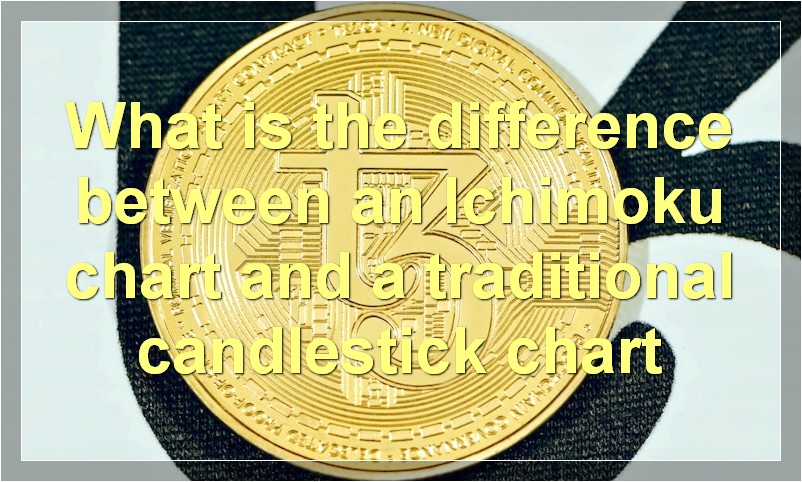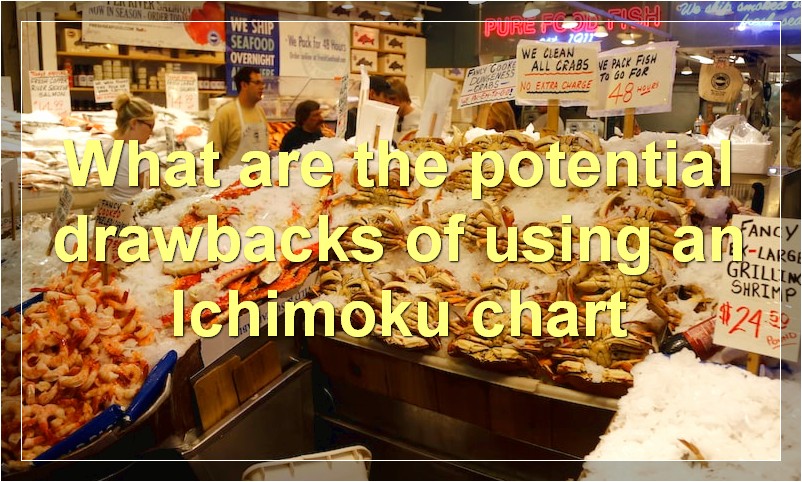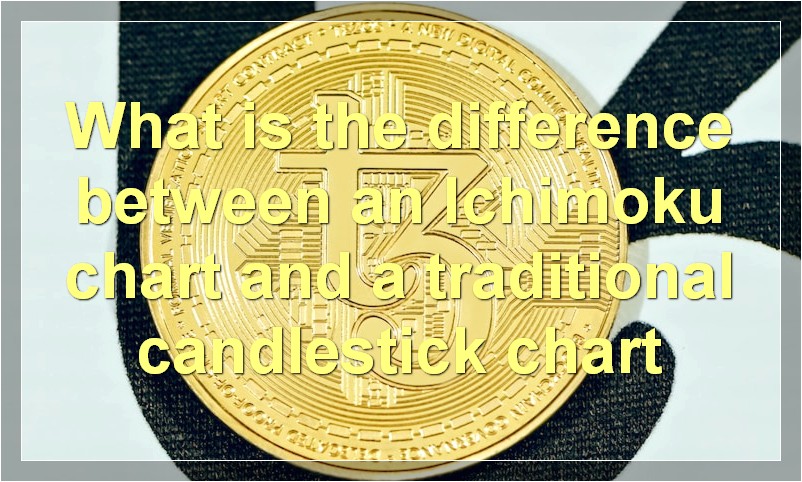If you’re looking to get started with Ichimoku, this article is for you. We’ll go over the key components, benefits, and potential drawbacks of this popular technical indicator.
What are the key components of an Ichimoku chart
An Ichimoku chart is a powerful technical analysis tool that can help you identify trends and make better-informed trading decisions. Here are the key components of an Ichimoku chart and what they can tell you about the market.
The Ichimoku cloud is the most distinctive feature of an Ichimoku chart. It is formed by plotting two moving averages and identifying the area between them. This area is shaded in to form the cloud.
The Ichimoku cloud can give you information about the trend, as well as potential support and resistance levels. If the price is above the cloud, it is generally considered to be in an uptrend. If the price is below the cloud, it is generally considered to be in a downtrend.
The leading span A and leading span B are plotted 26 periods ahead of the current candlestick. Leading span A is the midpoint between the 9 period high and low. Leading span B is the midpoint between the 26 period high and low.
The leading spans indicate the future direction of price movement. If leading span A is above leading span B, then the market is expected to move higher. If leading span A is below leading span B, then the market is expected to move lower.
The lagging span is plotted 26 periods behind the current candlestick. It is simply a plot of the 26 period high or low, whichever is closer to the current price. The lagging span can be used as a trailing stop loss level.
The conversion line (red) is plotted 9 periods behind the current candlestick. It is formed by plotting the midpoint between the highest high and lowest low over the last 9 periods. The base line (blue) is plotted 26 periods behind the current candlestick. It is formed by plotting the midpoint between the highest high and lowest low over the last 26 periods.
The conversion line and base line are used to identify potential areas of support and resistance. If the market is in an uptrend, prices are likely to find support at or near the conversion line. If the market is in a downtrend, prices are likely to find resistance at or near the base line.
What is the difference between an Ichimoku chart and a traditional candlestick chart

An Ichimoku chart is a Japanese candlestick chart that shows past, present, and future price information. The Ichimoku Cloud, which is the primary indicator on the chart, shows areas of support and resistance. The Ichimoku Cloud also shows the trend direction and can be used to generate buy and sell signals. The traditional candlestick chart only shows the past price action.
How do you interpret an Ichimoku chart
An Ichimoku chart is a technical analysis tool that shows support and resistance levels, as well as momentum and trend direction. The chart is comprised of five lines: the tenkan-sen, kijun-sen, senkou span A, senkou span B, and the chikou span. Each of these lines represents a different aspect of price action and can be used to generate trading signals.
The tenkan-sen is the shortest of the five lines and is considered a leading indicator. It is calculated by taking the average of the highest high and the lowest low over the past nine periods. The kijun-sen is the next longest line and is considered a lagging indicator. It is calculated by taking the average of the highest high and lowest low over the past 26 periods.
The senkou span A is the first of two lagging indicators and is calculated by taking the average of the tenkan-sen and kijun-sen and adding it to the highest high over the past 52 periods. The senkou span B is the second lagging indicator and is calculated by taking the average of the highest high and lowest low over the past 52 periods.
The chikou span is a lagging indicator that is simply the current price plotted 26 periods in the future. This line is used to identify potential reversal points.
The key to interpreting an Ichimoku chart lies in understanding how each of these five lines interact with one another. When the shorter-term lines cross above or below the longer-term lines, it can signal a change in trend. Likewise, when price action moves above or below any of these lines, it can be interpreted as either support or resistance. Finally, momentum can be gauged by looking at the distance between the various lines. When they are close together, it suggests that prices are consolidating; when they are far apart, it suggests that prices are trending.
What are the benefits of using an Ichimoku chart
An Ichimoku chart, also called an Ichimoku Kinko Hyo chart, is a technical analysis tool used to identify trends and support and resistance levels. The chart is composed of five lines: the tenkan-sen, kijun-sen, senkou span A, senkou span B, and the chikou span. These five lines are used to identify trends, support and resistance levels, and potential areas of price reversals.
The Ichimoku chart is a powerful tool that can be used to make informed trading decisions. When used correctly, it can help traders identify trends, find potential areas of support and resistance, and make better-informed decisions about when to enter and exit trades.
How can an Ichimoku chart be used to generate trading signals
An Ichimoku chart can be used to generate trading signals in a number of ways. One way is to use the crossing of the Tenkan-sen and Kijun-sen lines as a signal to buy or sell. Another way is to use the position of price relative to the cloud as a signal. If price is above the cloud, it is generally considered bullish, while if price is below the cloud, it is generally considered bearish.
What are the potential drawbacks of using an Ichimoku chart

An Ichimoku chart is a type of financial chart used to predict future prices. It is based on the Ichimoku Cloud, which is a collection of moving averages and other indicators.
The potential drawbacks of using an Ichimoku chart include:
-It can be difficult to interpret
-It is based on past data, so it may not be accurate for predicting future prices
-It only considers a limited range of data points
How do you construct an Ichimoku chart
An Ichimoku chart is a technical analysis tool that shows support and resistance levels, as well as momentum and trend direction. The chart is composed of five lines: the tenkan-sen, kijun-sen, senkou span A, senkou span B, and the chikou span.
The tenkan-sen is the short-term moving average, while the kijun-sen is the long-term moving average. The senkou span A is the midpoint between the tenkan-sen and kijun-sen, while the senkou span B is the midpoint between the current price and the previous price. Finally, the chikou span is the current price projected 26 periods into the future.
Ichimoku charts are used to identify potential areas of support and resistance, as well as trends. When the senkou span A crosses above the senkou span B, it is considered a bullish signal, indicating that prices are likely to continue to rise. Conversely, when the senkou span A crosses below the senkou span B, it is considered a bearish signal, indicating that prices are likely to fall.
The Ichimoku chart can be a valuable tool for traders and investors alike. It can help you identify potential areas of support and resistance, as well as trends. With proper interpretation, an Ichimoku chart can give you an edge in your trading or investing activities.
What is the history of the Ichimoku charting technique
The Ichimoku charting technique is a Japanese approach to technical analysis that was developed by journalist Goichi Hosoda in the late 1930s. The Ichimoku charting technique is designed to help identify major trends in the market and to gauge both short-term and long-term momentum. The name Ichimoku is derived from the Japanese words for “one look” or “a glance”.
The Ichimoku charting technique uses a variety of indicators to identify key support and resistance levels. The most important of these indicators are the Tenkan-sen and the Kijun-sen. The Tenkan-sen is a moving average of the highest high and the lowest low over the last 9 periods. The Kijun-sen is a moving average of the highest high and the lowest low over the last 26 periods. These two indicators are used to identify short-term and long-term trends in the market.
The Ichimoku charting technique also uses the concepts of Kumo clouds and Senkou Span to identify key support and resistance levels. Kumo clouds are formed by drawing a line between the Tenkan-sen and the Kijun-sen and then extending that line 26 periods into the future. This line is known as the Senkou Span A. The Senkou Span B is formed by drawing a line between the highest high and the lowest low over the last 52 periods and then extending that line 26 periods into the future. These lines are used to identify potential support and resistance levels.
The Ichimoku charting technique can be used on any time frame, but it is most commonly used on daily charts. When using this approach, traders will typically look for bullish signals when the price is above the Kumo cloud and bearish signals when the price is below the Kumo cloud.
Who developed the Ichimoku charting technique
The Ichimoku charting technique was developed by Japanese journalist Goichi Hosoda. Hosoda was a commodities trader who was looking for a way to predict future prices. He developed the Ichimoku technique after years of research and testing. The Ichimoku technique is now used by traders all over the world.
How has the Ichimoku charting technique evolved over time
The Ichimoku charting technique is a Japanese approach to technical analysis that has been used for decades. The key components of the Ichimoku chart are the nine moving averages that are used to identify key levels of support and resistance. These moving averages have been tweaked and refined over the years, and the Ichimoku technique has evolved along with them. The Ichimoku technique is now widely used by technical analysts all over the world, and it continues to be a powerful tool for identifying trading opportunities.

